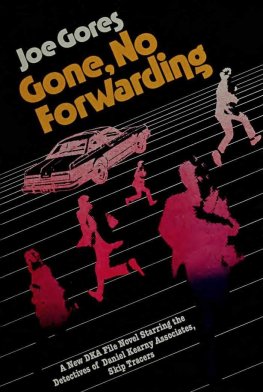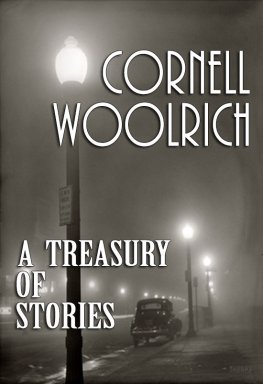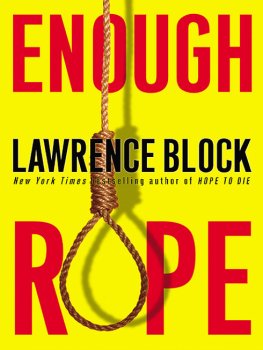Joe Gores
Mostly Murder: A Short Story Collection
Introduction copyright 1992 by Joe Gores.
File #1: The Mayfield Case copyright 1967 by Davis Publications, Inc. First published in Ellery Queens Mystery Magazine. Reprinted by permission of Davis Publications, Inc.
The Second Coming copyright 1966 by Holloway House Publishing Co. First published in Adams Best Fiction. Reprinted by permission of the author.
Plot It Yourself copyright 1987 by Joe Gores. First published in Ellery Queens Mystery Magazine under the title Detectivitis, Anyone? Reprinted by permission of the author.
Raptor copyright 1983 by Joe Gores. First published in Ellery Queens Mystery Magazine. Reprinted by permission of the author. Watch for It copyright 1973 by Mystery Writers of America. First published in the anthology Mirror, Mirror, Fatal Mirror, edited by Hans Stefan Santesson. Reprinted by permission of the Mystery Writers of America.
The Andrech Samples copyright 1970 by Magnum-Royal Publications, Inc. First published in Swank Magazine. Reprinted by permission of the author.
Killer Man copyright 1958 by Flying Eagle Publications, Inc. First published in Manhunt Magazine under the title Pro. Reprinted by permission of the author.
Goodbye, Pops copyright 1969 by Joe Gores. First published in Ellery Queens Mystery Magazine. Reprinted by permission of the author.
Writing is a profession you start to get the hang of about the time your non-writing contemporaries are talking early retirement. So selecting a group of your own stories is a humbling experience. True, each brings an earlier you back to life. True, you read with the eyes you wore when you wrote them, you smell the smells of then, feel the textures, hear the sounds, taste the excitements, remember the enthusiasms.
But reading them now, you also see what you should have done better, what you should smooth out, update, modernize. But you cant. Mysteries, like Hamlets players, are the abstracts and brief chronicles of their time; to edit and alter them after the fact destroys much of their value. Any differences the scholars among you might find between the stories here and their first publication is just a restoration of the original text.
I didnt set out to be a mystery writer. In those early years I just kept writing anything and everything mainstream, mystery, adventure, sci-fi, 1520 short stories in the mail at all times and just kept getting rejected: over 1,000 printed rejection slips during the four years between graduation from Notre Dame and my first sale. I once papered a bathroom with rejection slips a fitting ambiance for them, actually.
I wanted to sell, to be a professional. I wanted desperately to justify Stanford Universitys rejection of me for their creative-writing Masters program because the stories I had submitted to them read as if they had been written to be sold.
Killer Man, the earliest story here, was my second published story; it appeared in the June, 1958, Manhunt the only magazine that ever paid me with a post-dated check. Plot It Yourself, the most recent story here, appeared in the January, 1988, Ellery Queens Mystery Magazine. I perpetrated the other tales of Mostly Murder during the 30 years in between, often while working other jobs to support my writing habit.
I spent a half-dozen Minnesota summers unloading boxcars of lumber, cement, bricks and coal. I became an instructor at a weight gym in Palo Alto. Hod-carrier during reconstruction of the San Fernando Mission. Roughie on a carnival making the midwest county-fair midway circuit. Dishwasher stranded in Salt Lake City. Manager of a hot-sheet motel near San Franciscos Cow Palace. Car-parker for Giants home games at the Stick, and evenings at The Shadows restaurant on Telegraph Hill. Briefly, a logger in Alaska. Not so briefly, a teacher at an African boys secondary school in Kenya. For two draftee years, a Pentagon writer of Army generals biographies.
And for 12 years, off and on, a private detective working out of San Francisco. First with the L.A. Walker Company, then as a partner in David Kikkert and Associates. The first real date my wife Dori and I had, in fact, was snatching a Cadillac from Mafia hitman Jimmy the Weasel Fratianno. I quit active field work in the late Seventies and sold DKA five years later, after my dear friend and partner, Dave Kikkert, fell over dead in the company parking lot while changing a tire on a repo.
As a detective, I was getting an inexhaustible supply of material. The things that happened to me on the street, the reactions they evoked, the people I worked with and the people I hunted down all these heavily informed my fiction. And writing agency reports that demanded the same who, what, where, when, why and how of successful fiction taught me how to tell a story well enough, eventually, to sell it ($65 from Manhunt for my first). And when I did sell, it was usually mystery or suspense. So I began to aim for those markets.
Of course most of the other things I have done, the places I have seen and the people I have known, have also turned up in the stories, novels, and scripts I have written during the three decades since my first story was published.
But not here. Not in Mostly Murder.
In 1966, while still a full-time detective, I talked about my work to the Northern California Chapter of Mystery Writers of America. The late Tony Boucher suggested I approach Fred Dannay of EQMM about doing a series of private-eye procedural stories based on the real agency. Fred was amenable, and the DKA File Series was born. File #1: The Mayfield Case is the first and perhaps most realistic of them; real life happened just about exactly the way fictional life does in the story. There are a dozen short stories and three novels in the series; as I write this, the fourth File Novel, 32 Cadillacs, is in manuscript.
A friend named Dave Buschman told me two stories. First, a week earlier he had witnessed a penitentiary execution. The experience had shaken him badly, but he was too cool to let it show. Recounted in Daves laconic, hip argot, this death burned itself into my brain. His second story was about a chance meeting with an old friend in North Beach. After they had chatted for twenty minutes, Dave asked after the mans wife. Oh, he said, she killed herself last night. My mind fused execution and meeting into The Second Coming although by then the dead wife, strangely, had become superfluous to my purposes.
I wrote Plot It Yourself for a Japanese magazine when my novel Hammett was doing well in that country. This was shortly after I had written a script for a half-hour TV drama series, with Orson Welles as narrator, which promptly died aborning. I converted my script into this story, giving Welless narrative voice to the killer. Thus he could make sardonic comment on the murder he committed while challenging the reader to solve it. Plot It Yourself is my only locked-room story (although the DKA File novel Final Notice is a sort of locked house novel). Connoisseurs of crime will note that the dinner Eric Stalker serves his victims is called the ideal dinner for The Detective in the The Nero Wolfe Cookbook.
Notebook entry: A man lives in the chinks of an affluent, creditcard society. Moves swiftly, like a shadow, no one is ever sure he has been there. Except for the aftermath. What aftermath? I wrote Raptor to find out; the story ended up having almost nothing to do with the original note. I cut ruthlessly first draft, 14,210 words, final, 4,800, to achieve a formal, stately gavotte where death was dealt with panache but without emotion. I used this to bring Raptor, finally, to a comprehension of the Void in Musashis Book of Five Rings.














